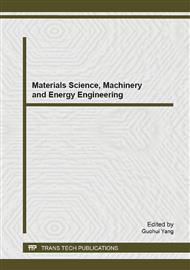p.182
p.187
p.192
p.198
p.202
p.207
p.212
p.217
p.223
A Study on Chemical Foaming Geopolymer Building Materials
Abstract:
Zinc and aluminum powders were used as foaming agents and organosilane was innovatively used as a modifier to synthesize a foamed geopolymer. The produced foamed geopolymer with enhanced compressive strength and low thermal conductivity is an ideal material for fire protection, sound absorption and thermal insulation. The low thermal conductivity was achieved by increasing the porosity in the foamed geopolymer and the enhanced compressive strength was realized by adding the modifier. The pore numbers in the foamed geopolymer were greatly increased by releasing the hydrogen gas, which was produced from the chemical reaction of zinc and aluminum powders in a base solution. The modifier decreased the foaming reaction rate and generated homogeneously-distributed small pores in the foamed geopolymer with improved compressive strength.
Info:
Periodical:
Pages:
202-206
Citation:
Online since:
December 2013
Authors:
Price:
Сopyright:
© 2014 Trans Tech Publications Ltd. All Rights Reserved
Share:
Citation:


